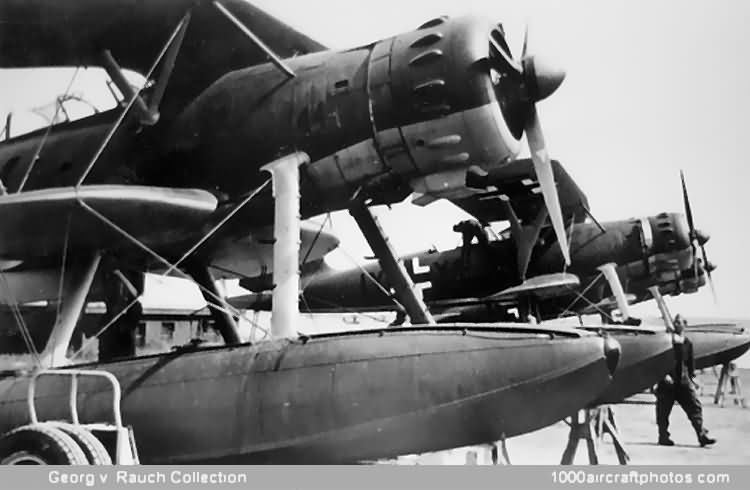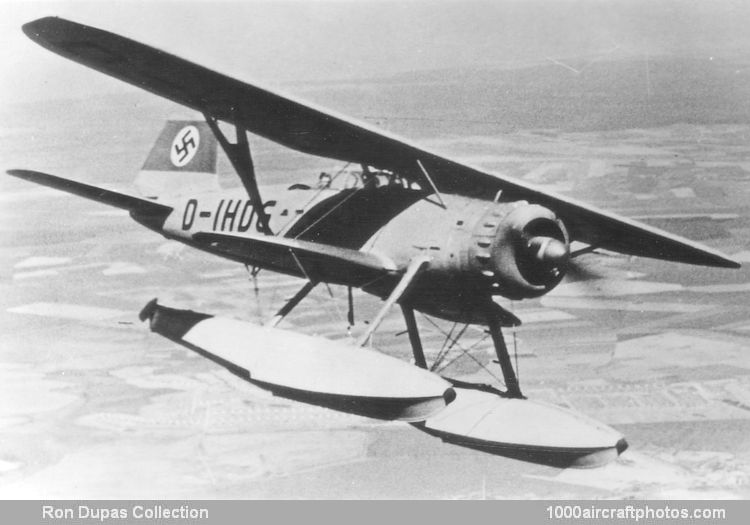04/30/2011. Remarks by Johan Visschedijk: "Although the He 114 two-seat reconnaissance floatplane was designed primarily for catapult operation from surface vessels of the Deutsche Kriegsmarine (German Navy), succeeding the He 60 biplane, it was destined to operate almost exclusively from coastal seaplane stations, and during the war years it operated over the Channel, the North Sea, the Adriatic, the Mediterranean and the Black Sea, although its activities were largely confined to areas in which it was unlikely to encounter Allied fighters.
Developed in parallel with the twin-engined He 115 floatplane, the He 114 was a sesquiplane of mixed construction. The wings were primarily of wood, the upper wing being carried above the fuselage by splayed N-struts and braced to the lower stub wings by sloping Y-struts, the fuselage was a metal monocoque, and the single-step floats were constructed of hydronalium. The first prototype, the He 114 V1 (registered D-UBAM c/n 1970), was powered by a Daimler-Benz DB 600 twelve-cylinder liquid-cooled inverted V-engine which drove a two-blade airscrew, and flew for the first time in 1936.
Flown shortly after the first machine, the He 114 V2 (D-UGAT c/n 1971) differed in having a Junkers Jumo 210 engine driving a three-blade airscrew, while the He 114 V3 (D-IDEG c/n 1972) and He 114 V4 (D-IOGD c/n 2255) had BMW 132Dc and 132K air-cooled radials driving two- and three-blade airscrews respectively. The last-mentioned prototype featured floats of modified design which were intended to throw the water spray clear of the aircraft during take off and landing. These proved unsuccessful, however, as the floatplane proved unstable while running on the water, tending to swerve violently, and the He 114 V4 was re-equipped with floats similar to those of its predecessors.
The He 114 V5 (D-IQRS c/n 2256) powered by the BMW 132Dc was intended as the production prototype, and a pre-production series of ten similar He 114 A-0 floatplanes were built, four of these receiving Versuchs (test) designations He 114 V6 to He 114 V9 inclusive for further development purposes. One of these, the He 114 V8 (D-IGED) differed from earlier machines in having the catapult points deleted, serving as the prototype for the He 114 A-1 production model.

